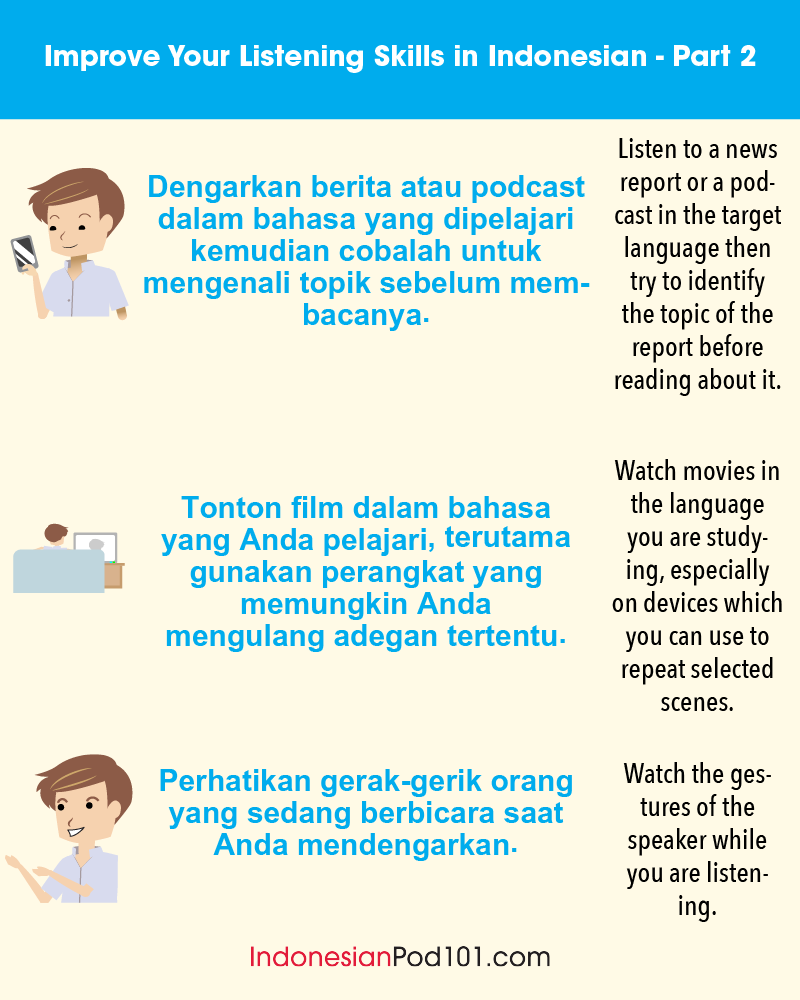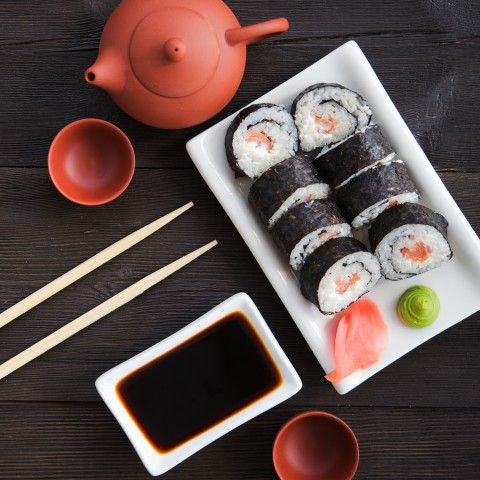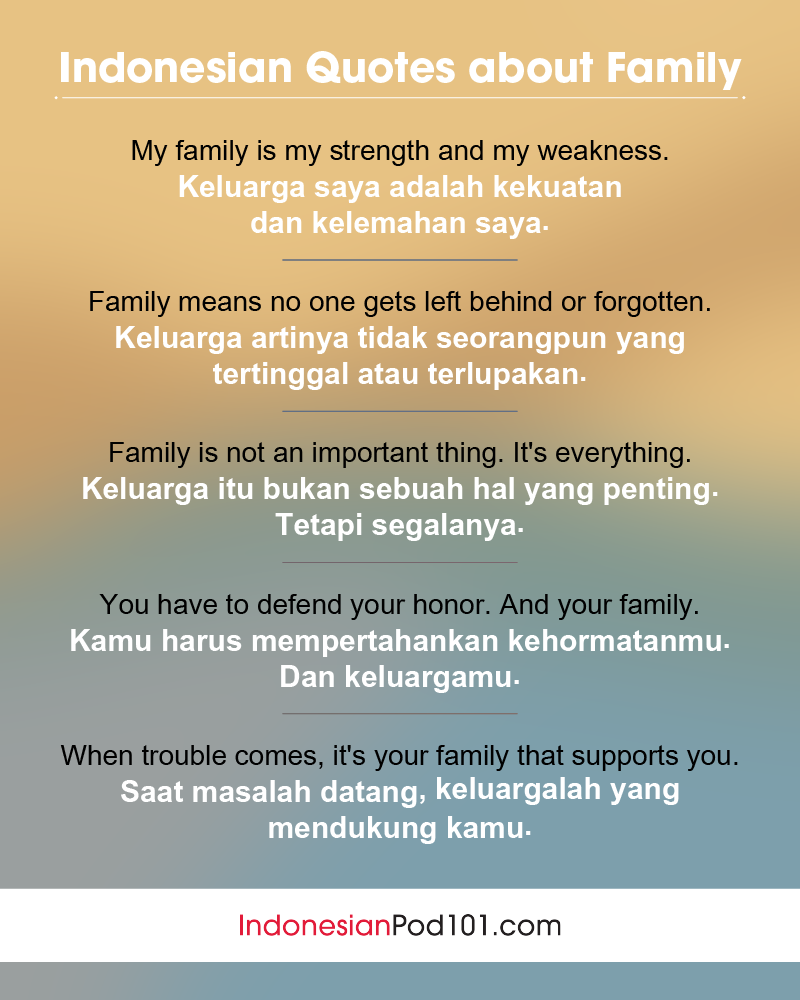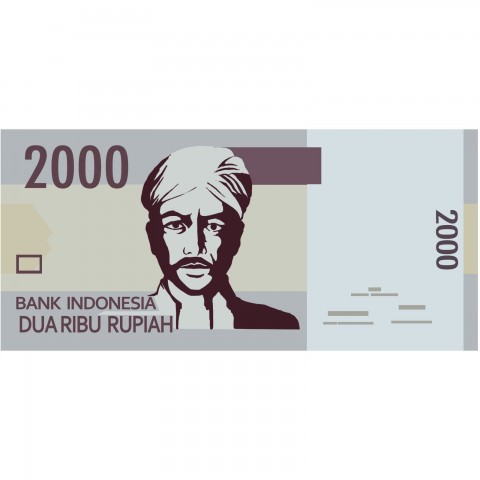Right now, in just five minutes, you can give your Indonesian vocabulary a super-size boost.
In just one regular-sized article, we’ve prepared for you a fantastic overview of popular Indonesian adjectives, plus the top 100 Indonesian adjectives you need for any situation. Looking for an example of Indonesian adjectives at work? We have plenty of those, too.
With the isolating grammar of the Indonesian language, simply reading a lot of example sentences with these popular Indonesian adjectives is a great way to naturally assimilate syntax and vocabulary.

Table of Contents
- A Quick Overview of Indonesian Adjectives
- List of the Top 100 Indonesian Adjectives
- Modifying Adjectives
- Conclusion
1. A Quick Overview of Indonesian Adjectives
If you haven’t already realized it by now, the way adjectives work in Indonesian grammar couldn’t be easier. The words simply don’t change at all. The adjectives simply come directly after the noun phrase, the opposite of where they go in English.
There’s also no word to directly connect an adjective to a noun like “is” can be used in English. You either directly say the adjective or use a ber-verb.
- Gedung ini besar.
“This building is big.” - Kopi saya berwarna hitam.
“My coffee is colored black.” (My coffee has-the-color-of black.)
However, one potential downside of this is that, because there’s no such thing as “adjective endings” or declension in Indonesian, it may be hard at first to figure out which words in the sentence are adjectives to begin with.
Take a sentence like this for example:
- Saya bekerja di kapal besar.
“I work on a big boat.”
The adjective there is besar, meaning “big,” but that just has to be memorized.
Fortunately, the more example sentences you read and internalize, the better your sense will be for how adjectives work syntactically in Indonesian, and the more you’ll start to remember as well.
Ready to learn Indonesian describing words? Let’s get started with our list of the top Indonesian adjectives.
2. List of the Top 100 Indonesian Adjectives
1- Describing Colors
The most basic adjectives you can learn in any language are the words for different colors. For some reason, a lot of textbooks leave out “gray” and “brown”—two of the most common colors anywhere! Here’s our list of the Indonesian top adjectives for colors.
1. putih – white
- Tas ini putih atau abu-abu?
“Is this bag white or gray?”
2. hitam – black
- Matanya warna hitam.
“Her eyes are black.”
3. merah – red
- Langitnya merah, dan aku takut.
“The sky is red, and I’m scared.”
4. biru – blue
- Anda harus membawa pulpen biru atau hitam.
“You have to bring a blue or black pen.”
5. hijau – green
- Di sana semua pohon hijau.
“All the trees are green there.”
6. kuning – yellow
- Apakah kamu suka ayam kuning?
“Do you like yellow chicken (a Javanese dish)?”
7. coklat – brown
- Rambutku berwarna coklat.
“My hair is brown.”
8. merah muda – pink
- Aku tidak suka pakai pakaian merah muda.
“I don’t like wearing pink clothes.”
9. abu-abu – gray; ash-colored
- Waktu hujan, langit berwarna abu-abu.
“When it rains, the sky is gray.”
10. oranye – orange
- Jeruk sunkist biasanya berwarna oranye.
“Orange juice is usually orange.”
2- Describing Taste
Indonesians love flavorful food. Go into any restaurant, from the smallest warungs to the biggest restos, and you’ll find people who are experts at making food taste great, making it essential to know words for taste when you learn Indonesian adjectives.
11. asin – salty
- Orang Tiongkok suka telur asin.
“Chinese people like salted eggs.”
12. manis – sweet
- Kamu suka es teh manis?
“Do you like sweet iced tea?”
13. hambar – bland
- Nasi putih hambar.
“White rice is bland.”
14. segar – fresh
- Di mana susu segarnya?
“Where is the fresh milk?”
15. busuk – rotten
- Duren di koper Anda busuk!
“The durian in your suitcase is rotten!”
16. pahit – bitter
- Pare rasanya pahit.
“Bitter gourd tastes bitter.”
17. enak – delicious
- Mie goreng di warung ini enak!
“The fried noodles at this restaurant are delicious!”
18. lezat – delicious (used in advertising)
- Super lezaaat!
“Super tastyyyyy!”
19. sedap – delicious (used in advertising)
- Ada Mie Sedap di sini?
“Do you have Mie Sedap (an instant noodle brand) here?”
20. pedas – spicy
- Saya tidak suka makanan pedas.
“I don’t like spicy food.”
Note that for pedas, you may hear it pronounced and written as pedes, an alternate usage that comes from Javanese influence.
3- Describing Personality
Now let’s look at some ways to describe different people, outside of what they may look like. When you learn Indonesian adjectives, knowing how to talk about personality is of great importance, as in any language.
21. baik hati – warmhearted
-
Pak Rektor adalah orang baik hati.
“The university president is a warmhearted person.”
22. rendah hati – humble
- Lebih baik rendah hati hari ini.
“It’s better to be humble today.”
23. sombong – arrogant
- Mengapa dia sangat sombong?
“Why is he so arrogant?”
24. pintar – clever
- Orang muda masa kini sangat pintar.
“Young people today are very clever.”
25. jelek – rotten; no-good
- Kain baju ini kualitasnya jelek. Baru dua hari sudah robek.
“The cloth quality of this shirt is bad. It’s only been two days, and it’s ripped already.”
26. nakal – naughty; badly behaved
- Anak-anak di sekolah tidak nakal.
“Children at school are not naughty.”
27. egois – selfish; egotistical
- Dia tidak suka menyumbang uang karena dia egois.
“She doesn’t like donating money because she’s selfish.”
28. malas – lazy
- Jangan malas! Ayo pergi!
“Don’t be lazy! Let’s go!”
29. mager – lazy (slang word meaning “too lazy to move.” )
- A: Kok tidak ke KTV?
B: Mager sih. - A: “How come you’re not going to karaoke?”
B: “Too lazy to move, y’know?”
30. sopan – polite
- Kamu harus sopan waktu kamu berbicara.
“You have to be polite when you speak.”
4- Describing Feelings
When anybody asks “How are you?” you can either give a neutral response such as baik, meaning “good,” or be a little more exact. Be honest about your feelings in Indonesian!
31. capek – exhausted; tired (note the possible alternate spelling cape)
- Saya bekerja, terus capek.
“I work, and then I get tired.”
32. sedih – sad
- Ini novel sedih.
“This is a sad book.”
33. senang – happy
- Saya senang sekali bisa bertemu denganmu.
“I’m very happy to meet with you.”
34. bersemangat – excited; energetic
- Apakah kamu bersemangat hari ini?
“Are you excited today?”
35. cemas – nervous
- Jangan cemas, hanya interview saja.
“Don’t be nervous, it’s just an interview.”
36. santai – relaxed; calm
- Sulit santai kalau dikejar tenggat.
“It is hard to be relaxed/calm when you’re being chased by a deadline.”
37. tenang – patient; calm
- Mengapa dia masih tenang?
“How come he’s still calm?”
38. marah – angry; furious
- Saya akan menjadi marah.
“I’m going to get angry.”
39. mabuk – queasy
- Apakah kamu merasa mabuk?
“Do you feel queasy?”
40. sakit – sick; in pain
- Mata saya sakit.
“My eyes hurt.”
41. nyaman – comfortable
- Helm saya terlalu kecil, jadi tidak nyaman.
“My helmet is too small, so it’s not comfortable.”
5- Describing Appearance (People)
Let’s not be rude here, but you’ve always got to be able to talk about what people are like in addition to how they act.
42. kaya – rich
- Tidak ada banyak orang kaya di kota tua.
“There aren’t a lot of rich people in the old city.”
43. tinggi – tall
- Adik saya semakin tinggi setiap hari.
“My little brother is taller every day.”
44. pendek – short
- Orang pendek biasanya tidak suka main bola basket.
“Short people usually don’t like basketball.”
45. rajin – studious; focused
- Saya tidak pernah melihat mahasiswa rajin seperti kamu.
“I’ve never seen a student so focused like you are.”
46. miskin – poor
- Ada banyak orang miskin di negara ini.
“There are a lot of poor people in this country.”
47. muda – young
- Semangat waktu muda habis waktu tua.
“Energy when one is young is gone when one is old.”
48. tua – old
- Wanita berumur suka minum teh manis.
“Old women like to drink sweet tea.”
49. gemuk – fat
- Kok, kamu sudah gemuk!
“Whoa, you’re already fat!”
50. langsing – slim
- Di mana semua cowok-cowok langsing?
“Where are all the slim guys?”
51. cantik – beautiful; pretty
- Tetapi kamu masih cantik.
“But you’re still beautiful.”
Note that this word can also describe Indonesia!
52. berotot – muscular
- Bapakmu berotot atau langsing?
“Is your dad muscular or slim?”
53. lemah – weak
- Jantung saya lemah, jadi saya tidak bisa pergi ke gym.
“My heart is weak, so I can’t go to the gym.”
6- Describing Time
Indonesian doesn’t distinguish between adjectives and adverbs, so some of these fall into the “adverb” category in English. That means when it comes to describing time, these will do double duty.
54. cepat – fast
- Hari ini cepat selesai.
“Today was over fast.”
55. lambat – slow
- Dia bicara terlalu lambat.
“He speaks too slowly.”
56. awal – early
- Kami mulai awal minggu depan.
“We’re starting early next week.”
57. tepat waktu – on time
- Mengapa hari ini Anda tidak tepat waktu?
“Why weren’t you on time this morning?”
58. terlambat – late
- Jangan terlambat besok.
“Don’t be late tomorrow.”
59. ketinggalan jaman – outdated; outmoded
- Mobil orang tuaku ketinggalan jaman.
“The car my parents have is outdated.”
60. modern – modern (note that there’s a hidden e in between the r and the n in Indonesian: it’s pronounced moderen)
- Apakah kamu suka lukisan modern?
“Do you like modern paintings?”
61. kuno – ancient
- Lihatlah jalan-jalan kuno di kota.
“Look at the ancient streets in the town.”
62. kontemporer – contemporary
- Mereka sangat suka bermain musik kontemporer.
“They really like playing contemporary music.”
7- Describing Appearance (Things)
Naturally, there are different words in Indonesian used to describe objects as opposed to people.
63. mahal – expensive
- Yang ini terlalu mahal.
“This one is too expensive.”
64. tebal – thick
- Dia pakai jilbab tebal.
“She wore a thick jilbab.”
65. indah – beautiful
- Laut dan pantai di Indonesia indah sekali.
“The sea and beaches in Indonesia are very beautiful.”
66. tipis – thin
- Cuci yang tipis dulu.
“Wash the thin ones first.”
67. besar – big
- Ada piring lebih besar?
“Are there bigger plates?”
68. kecil – small
- Sepatuku terlalu kecil.
“My shoes are too small.”
69. panjang – long
- Saya mau tempat tidur lebih panjang.
“I want a longer bed.”
70. lebar – wide
- Rumah mereka tidak mahal, tapi lebar.
“Their house isn’t expensive, but it’s wide.”
71. luas – wide; broad (used for landscapes & open spaces)
- Dari atas bisa melihat lingkungan luas.
“From the top, you can see the wide surroundings.”
72. berat – heavy
- Kotak-kotak ini berat.
“These boxes are heavy.”
73. baru – new
- Dia punya motor baru.
“He has a new motorcycle.”
74. lama – old
- Jangan pakai pakaian lama.
“Don’t wear old clothes.”
8- Describing Weather
Weather in Indonesia is usually one thing, and it’s not “cold.” If these words aren’t enough for you, we actually have a whole separate resource just for weather words and phrases!
75. panas – hot
- Cuaca panas hari ini.
“The weather’s hot today.”
76. dingin – cold
- Di atas gunung cuaca lebih dingin.
“The weather is colder on top of a mountain.”
77. berawan – cloudy
- Selalu berawan di musim hujan.
“It’s always cloudy during the rainy season.”
78. berkabut – foggy
- Dekat pantai cuaca berkabut.
“The weather is foggy near the beach.”
79. cerah – sunny
- Waduh, hari ini cerah dan indah!
“Wow, today is sunny and beautiful!”
80. berangin – windy
- Kota Jakarta bukan kota berangin.
“Jakarta is not a windy city.”
81. hangat – warm
- Masih hangat di sore hari.
“It’s still warm in the evening.”
This has just been a taster. If you’re looking for more ways to talk about the weather in Indonesia, head on over to our dedicated blog post.
9- Describing Texture and Touch
This section is slightly different than describing what objects look like. Sure, they overlap, but texture is separate from appearance. And yet both are important categories to understand.
82. basah – wet
- Pakaiannya masih basah.
“The clothes are still wet.”
83. kering – dry
- Semennya sudah kering belum?
“Is the cement dry or not?”
84. keras – hard
- Kelapanya terlalu keras; tidak bisa dibuka.
“The coconut is too hard; it can’t be opened.”
85. halus – smooth
- Bahasa Jawa di Yogyakarta lebih halus.
“The Javanese spoken in Yogyakarta is smoother.”
86. kenyal – bouncy; springy
- Ranjang di Asia tidak kenyal.
“Beds in Asia are not bouncy.”
87. berbulu – furry; hairy; feathered
- Burung kecil halus dan berbulu.
“The little bird is soft and feathery.”
88. rapuh – brittle; fragile; flimsy
- Jangan meletakkan barang rapuh dekat tangga.
“Don’t put fragile things near the stairs.”
89. licin – slippery
- Awas, lantai licin.
“Be careful, the floor is slippery.”
90. pecah – broken; cracked
- HPku pecah!
“My phone is cracked!”
91. lengket – sticky
- Ada sesuatu lengket di rambutku!
“There’s something sticky in my hair!”
10- Describing Concepts
This section is a goldmine for when you’ve got to talk about a tough problem or question you’re dealing with, or when you need to explain something to somebody else. Obviously, our list of top Indonesian adjectives wouldn’t be complete without words to describe concepts.
92. sederhana – simple
- Itu adalah cinta sederhana.
“It was a simple love.”
93. mudah – easy
- Belajar bahasa Indonesia lebih fasih daripada belajar bahasa Jawa
“Studying Indonesian is easier than Javanese.”
94. sulit – difficult
- Ujian akhir semester sulit.
“The end-of-semester test is difficult.”
95. susah – complicated; difficult
- Tata bahasa bahasa Inggris susah.
“English grammar is complicated.”
96. penting – important
- Surat di atas meja penting.
“The letter on the table is important.”
97. salah – wrong; incorrect
- Semua yang kamu katakan salah.
“Everything you say is wrong.”
98. benar – true
- Tidak semua di televisi benar.
“Not everything on TV is true.”
99. palsu – false
- Itu segala-galanya palsu.
“That’s completely false.”
100. resmi – formal; official
- Anda harus mengisi formulir pengaduan resmi.
“You have to fill in a formal complaint form.”
3. Modifying Adjectives
So already up to this point, we’ve learned how to say the top 100 Indonesian adjectives. Let’s go ahead and expand that number—with only a couple more words.
To intensify adjectives in Indonesian, you can add banget or sekali after that adjective. Both mean “very” or “really,” though banget should only be used in informal situations.
- Aiii, mie goreng ini pedas banget!
“Ahh! These fried noodles are super spicy!”
In much the same way, we can add sangat in front of the adjective. This is a little bit weaker than sekali, and it can be used in formal or informal situations.
One more set of useful modifiers is kurang, meaning “too little; lacking,” and terlalu, meaning “too much.” These also go in front of the adjective in question.
- Saya tidak mau yang ini, terlalu mahal.
“I don’t want this one, it’s too expensive.”
4. Conclusion
Did you learn something new? Are there any words we missed on our Indonesian adjectives list you still want to know? Let us know in the comments.
I bet if you read this same article tomorrow, and maybe even the next day, these words will stick in your memory for a surprisingly long time. That’s what the science says, at least. In other words, to learn Indonesian adjectives and really learn them, don’t stop after the first read or the first lesson. Keep going!
By the way, to take your learning to the next level, check out the Indonesian content here on IndonesianPod101.com, with tons of additional wordlists and vocabulary resources waiting for you!
























































































